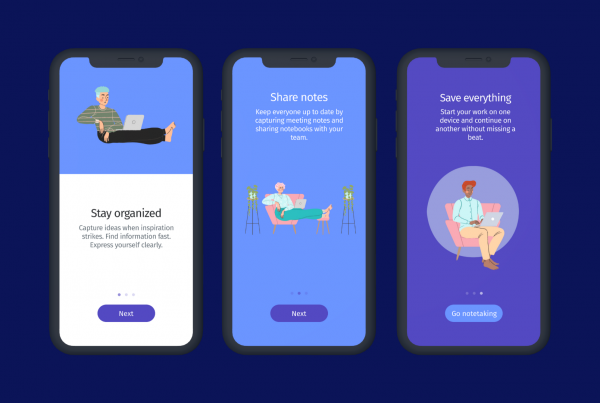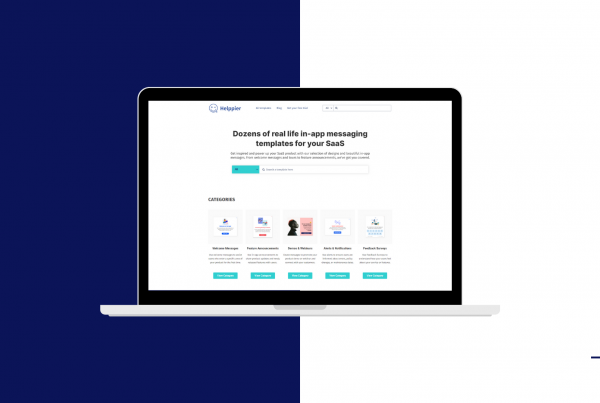Today we talk about what keeps online businesses up at night: Product Adoption.
Developing a software is already complex enough. Plenty of resources are involved, thousands of code lines, technical documentation and let’s not talk about customer service. But leading users to understand your product and come back, might be even more challenging.
Often, companies around the world recognize a specific problem and try to come up with a solution. A solution that will create outstanding value in people’s lives and make them go crazy every time there’s a new feature. But as we all know, that’s rarely the case. Especially in the B2B world where users and buyers are completely different groups of people.
The thing is, most SaaS companies actually have high signup rates. But lose customers within the first weeks of use. Why? They probably have a powerful marketing strategy which led to those rates. The problem comes after achieving that goal. Inside the software itself, discovering the so-called and desired “aha moment”.
The turning point when a customer discovers the value of a service and set themselves up to return.
So, you probably want to know what might be the reasons why your product still isn’t the next Facebook. We have some for you down below.
1. Users don’t understand what your product does
In today’s digital transformation era, it’s important to educate customers about your solution. Otherwise, they simply move on to another one that is easier and pleasant to use! SaaS companies tend to have complicated interfaces with several features and cool dashboards. But each one of them requires learning and acceptance from users, and it’s extremely important not to forget that before your business dies.
What to do
Plan a user education strategy that involves multiple channels, and apply it right in the decision-making phase. This means taking advantage of channels like social media, email, blogs and retargeting ads to keep your client informed about your product’s capabilities and how they can use it to achieve their goals.
Another great way to introduce value is through in-app guides and walkthroughs. Why? Because users will get more engaged with your software and learn to use it while they are using it. It’s an easy and quick way to get them to understand what your product offers, and eliminate any frustration.
But seriously, use every channel available.
“Tell the customers how to do, what to do, where to do, and how to execute in all practicality anything they need.”
2. The value you offer is not a priority
Time is precious nowadays and very few companies actually have time to kill. This might be one of the reasons why your product isn’t being used as it should. Maybe it demands more time and resources than you thought, and there are other “more important” things that need to be done. Are you sure your solution will offer ROI quickly?
What do to
There are plenty of roads to escape this situation. One of them is putting together case studies about your product’s adoption in other organizations. Then, have client testimonials and step-by-step guides with best practices ready to go. When you have it, gather your sales, account management and customer success teams and make sure they all communicate the same value message. This way, your clients know what to expect when making the purchase.
If possible, you could also partner with an external agency to use your product partly, so your client company doesn’t need to invest too many resources in an initial phase, and have personalized guidance through all the process.
3. Everyone fears change
Unless it has benefits. Changing means taking risks, which also means investing money, time and human resources on something you’re not sure will work. Your sales team probably convinced executives that your solution will guarantee results, but what about the people who are doing the job you promised to improve? They will be the ones blamed if something wrong happens.
What to do
Prepare them for change. Build a powerful customer support approach and guide them through every stage of the adoption process. This approach should not only include a self-service system, on which your clients are able to access important information about your service at any time but also, personalized guidance face-to-face, via email or live chat. Hosting webinars and live demos for your client company can also be a great strategy, as they can see visual content about your product, making it easier to take in information.
Build relationships. Keep in mind that communication and counseling will be crucial in the transition phase. Assign dedicated account managers or product ambassadors to ensure new clients understand how your product can have a positive impact. Teach your client how to take the first steps, the next ones will be almost instinctive.
For most SaaS and online platforms, having an innovative product is not enough. And, according to Huffington Post, only 1 in 100 new products is actually able to cover development costs. So, if right now it seems almost impossible to get users to return after the signup process, you might as well try some of these user-centered strategies.
Or try our platform.





